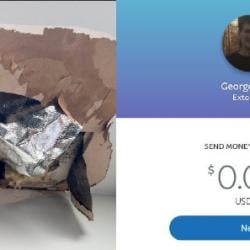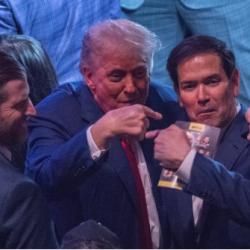Eight of the first 19 picks in yesterday's NBA draft were high school players. All of them went before St. Joe's guard — and St. Joe's graduate — Jameer Nelson, the college player of the year who led the Hawks to an undefeated season last year.
The NBA, in other words, has just invested millions of dollars and the hopes and futures of many of its franchises, in a bunch of teenagers.
Much talk today in the sports world of the "risks" these teams are taking by drafting players so young. The teams, many are saying, are "gambling" on these kids. I'd suggest that it's possible for these teams to mitigate some of that risk. And I'd insist that it's their obligation when gambling on these kids not to also gamble with these kids.
For a look at the perils and possibilities of a team investing in talented teenagers, consider the New York Mets' two young superstars of the 1980s, Dwight Gooden and Darryl Strawberry. The arrival of those two players as teenagers was the most exciting thing to happen to the franchise in more than a decade. They were a joy to watch and the team started winning — winning more than 100 games on its way to a World Championship in 1986. Gooden and Strawberry, both still underage, drank champagne in the locker room.
Strawberry was a five-tool player with the prettiest swing you ever saw. Doctor K retired hitters in a way that made them consider a permanent retirement.
Mets fans, people by nature inclined to expect failure, began to dream of a dynasty built around these still very young phenoms.
But that didn't happen. What happened instead was the baseball equivalent of an episode of Behind the Music. The Mets took a pair of talented teenagers, brought them to New York City and gave them each more money than they had ever seen or imagined. The not-so-surprising result was a tragedy for both the players and the team.
What if, in addition to the millions of dollars the Mets had invested in the talent of Gooden and Strawberry, they had also invested some money in the lives of those young players as human beings?
In 1984, in addition to paying Dwight Gooden all that money, the Mets could also have invested, say, $250,000, to hire someone like Harold Gould. The former Philadelphia Stars ace was then 59 years old.
"Here's your uniform, kid. Number 16. And here's your locker. And this is Mr. Gould. He's your personal coach, and he'll be there in the dugout for the next few seasons. When we're on the road, you'll be rooming with Mr. Gould. Mr. Gould knows baseball — he played with Satchel Paige, after all — and he can probably teach you a thing or two about facing big league hitters. But he also knows a thing or two about life and that's mainly why he's here. You listen to what Mr. Gould tells you, kid, and you've got an incredible future ahead of you."
The Orlando Magic's No. 1 pick in yesterday's NBA draft, Dwight Howard, may be a young man of exceptional character. Southwest Atlanta Christian Academy may have helped prepare him for the dizzying reality that, this morning, he woke up for the first time as a millionnaire. But the Magic has too much at stake in this young man's future — and too much responsibility for this young man's future — to simply assume this is the case without taking steps to insure that it is.
If NBA teams are going to draft teenagers, they also ought to draft some mentors. ("Here's your uniform, kid. And this is Mr. Malone …")












